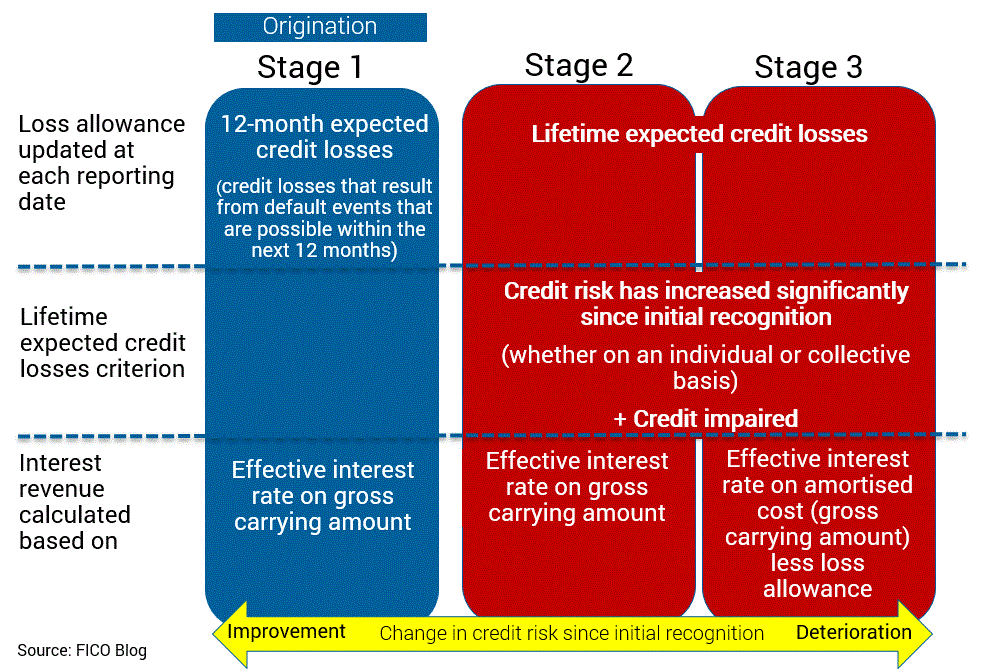IFRS 9 and Collections – The 31-Day Time Bomb
Blog: Enterprise Decision Management Blog

IFRS 9 may just be a new accounting standard, but accountants aren’t the only people scrambling to meet the January 2018 deadline. If you’re involved with consumer debt in any way, this regulation is going to change your world. (Unless, of course, you’re in the US – the name of the game for you will be CECL.)
I recently presented a webinar on how IFRS 9 will impact collections, and in this post I’ll share two changes that will have a massive impact on everyone in debt collection, from in-house collectors to DCAs to debt purchasers.
At 31 Days, Everything Changes
When accounts roll from Stage 1 (low risk) to Stage 2 (impaired risk), it’s a big deal.
31 days is a hard trigger that sends an account from Stage 1 to Stage 2.
- Impairment for Stage 1 accounts is 12-month expected credit losses.
- Impairment for Stage 2 and 3 accounts is lifetime expected credit losses.
- When one of a customer’s accounts moves stages, all of that customer’s accounts move to that stage, so impairment would be taken at the lifetime level for all of them.
This is going to cause seismic changes in the way we work accounts in collections.
Until now, it’s been OK for a certain amount of accounts to roll to bucket 2 (what’s now Stage 2). This has kept us within our cost to collect, we’ve met our regulatory requirements, we only have so much capacity to work accounts, and we know that some accounts will self-cure in bucket 2.
That’s not going to be the case under IFRS 9. Your CFO is going to come down to your department and say, “I can’t afford for this number of accounts to get to Stage 2, because I can’t afford to take this much provision back onto the good book. How do we stop this from happening?”
Why is the CFO going to be looking for you? Because just about every authority on IFRS 9 is saying impairments will rise by not less than 30%. Some are saying 50%. That is going to have a significant impact on profitability at the account, segment and portfolio levels. It’s going to make your CFO take a keen interest in how collections can impact the volume of accounts rolling to Stage 2.

Organizations will carry a heavy cost of letting those accounts that cure after 31 DPD get that far. So you will have to do more in the first 30 days than ever before. At the same time you will have to watch the cost to collect, NPS and regulatory compliance.
By the way, delinquency isn’t the only trigger for escalating impairments. If by any measure your organization can tell that a customer’s creditworthiness has eroded, you will probably need to escalate that customer to Stage 2.
Saying Goodbye to Good Customers
Today we look at delinquent customers and ask, which ones do I want to keep? That question is going to change in two major ways under IFRS 9.
First, if a customer is in Status 2 or 3, curing them doesn’t change their status. They still represent a higher risk, and you’re still going to be paying lifetime impairments on them. So you have to ask, what is the cost of keeping them on the books? Unless you can make a case for why their actual risk status has changed (what the regulation refers to as rebuttability), they’re still going to be expensive.
Organisations are going to need to get forensic with treatment analytics and decisions. Who you keep and why is now far more complicated.
That brings me to the second big change here: You may find yourself in the position of saying goodbye to customers you just cured. That makes it tricky for collectors – what can you tell customers about their near-term relationship with the organization once they cure? It will be a communications headache for customer relations. At some point, regulators will probably have something to say about this too.
And then, if you are going to be exiting “good” customers, who will you sell them to? When? And at what cost? Will debt purchasers understand how to price these accounts? Will your current DCAs have the capacity to handle more accounts from you? Will they want to work the low-performing debt or performing debt?
These are some of the questions you should be asking. You’ve got 10 months to figure it out.
If you want more information, listen to my on-demand webinar on IFRS and collections. And watch this space, because in my next post I’ll talk about some action items to help you get ready for both GDPR and IFRS 9.
The post IFRS 9 and Collections – The 31-Day Time Bomb appeared first on FICO.
Leave a Comment
You must be logged in to post a comment.







